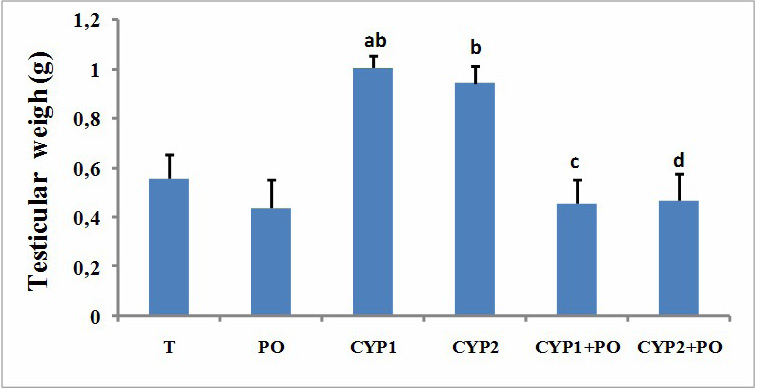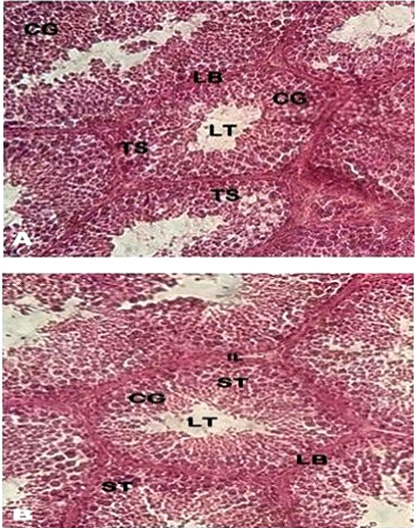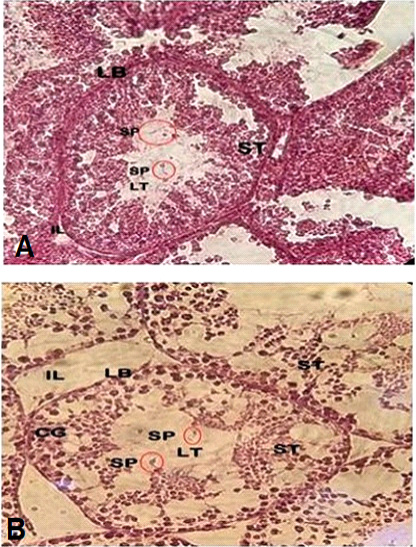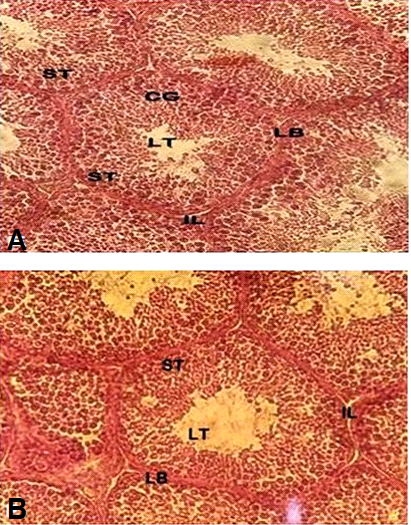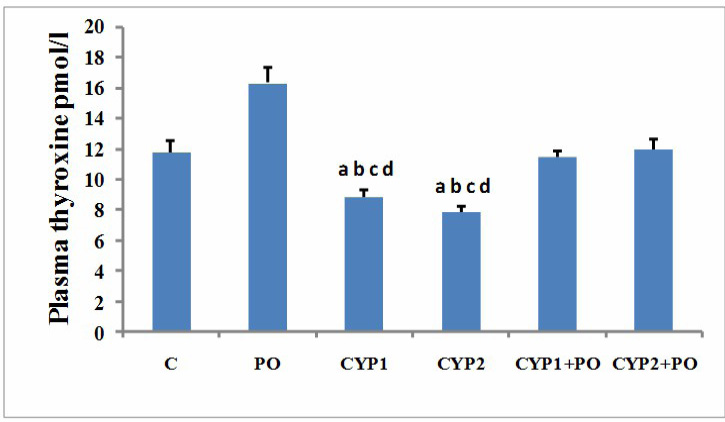Pulicaria odora Protects Domestic Male Pigeons (Columba livia domestica) Exposed to a Long Photoperiod from Cypermethrin-induced Seasonal Reproductive Impairment
Omar Berkani1*, Souheila Slimani2, Nora Sakhraoui3 and Cherif Abdennour1
1Laboratory of Animal Ecophysiology, Department of Biology, Faculty of Sciences, University of Badji Mokhtar, Annaba BP 12, 23000 Annaba, Algeria.
2Department of SNV, Faculty of Sciences, University of August 20, 1955 Skikda, Algeria.
3Laboratory of Research in Biodiversity Interaction, Ecosystem and Biotechnology (LRIBEB), University of 20 August 1955, Skikda, Algeria.
* Corresponding author: omar.berkani@univ-annaba.org
Fig. 1.
Testicular mass (mean+SEM) of male pigeons treated with two different doses of cypermethrin (10 and 20 mg/kg bw) and the aqueous extract of PO (300mg/kg bw) for 10 weeks, and subjected to long photoperiod (19L: 05D) (n=5).
a, Significant difference between the control, CYP1 and CYP2; b, Significant difference between the positive control, CYP2 and CYP2; c, Significant difference between CYP1+PO, CYP1 and CYP2; d, Significant difference between CYP2+PO, CYP1, and CYP2, e, Significant difference between CYP1 and CYP2.
Fig. 2.
Histological structure of the testicular control (A) and the positive control (B) of pigeons subjected to a long photoperiod (19L: 05D) (n=5) (X40).
ST, seminiferous tubule; Lb, basal lame; LT, lumen of seminiferous tubule; GL, germinal layer; IL, interstial lumen.
Fig. 3.
Histological structure of the testicular pigeons treated with CYP1 (A) and CYP2 (B) subjected to a long photoperiod (19L: 5D) (n=5) (X40).
For abbreviation see Fig. 2.
Fig. 4.
Histological structure of the testicular pigeons treated with CYP1+PO (A) and CYP2+PO (B) subjected to a long photoperiod (19L: 5D) (n=5). (X40).
For abbreviation see Fig. 2.
Fig. 5.
(means ± SEM) of male pigeons after 70 days exposure to Cypermethrin and P. odora (n=5). For statistical details, see Figure 1.







